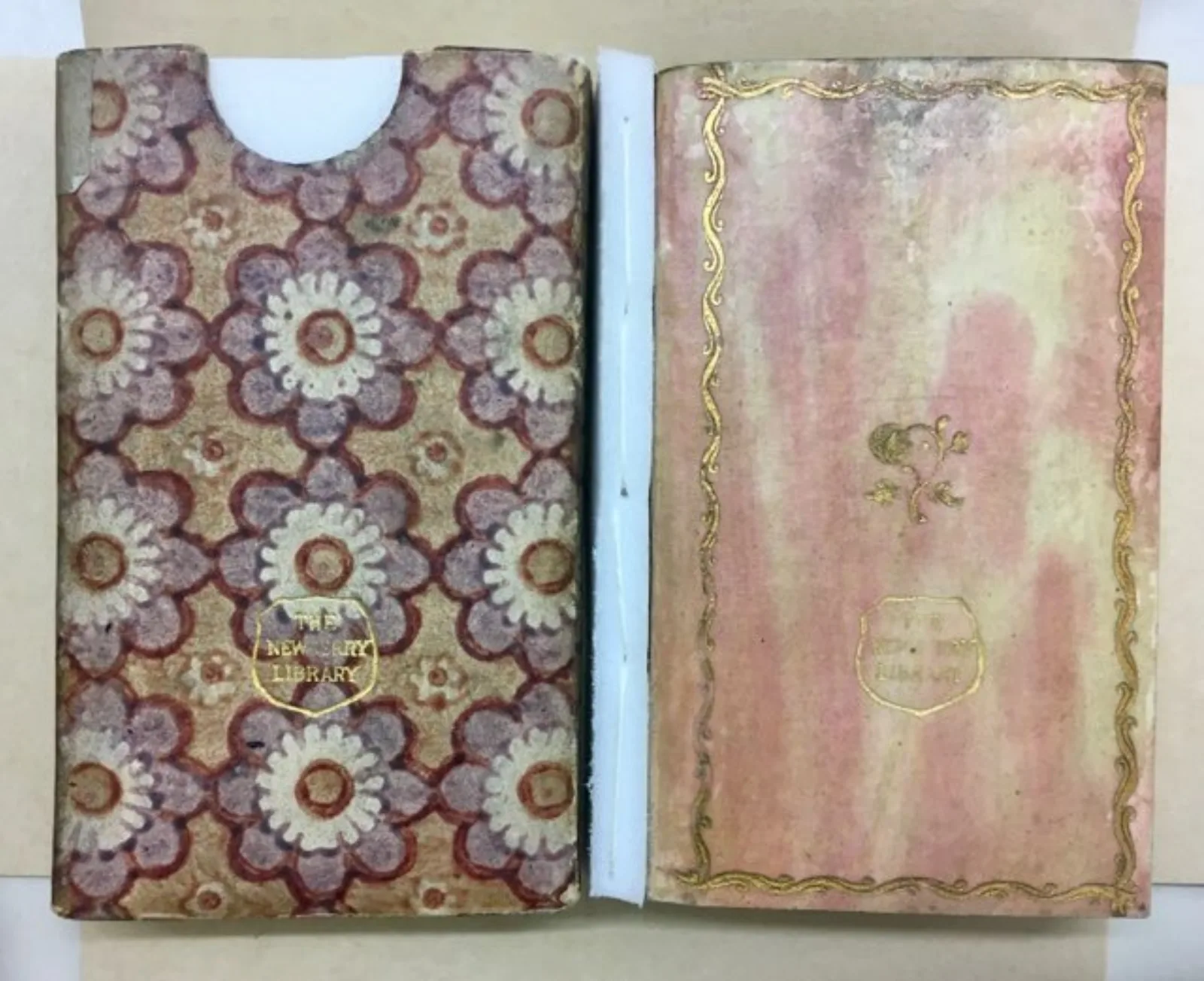Working in the Newberry’s Conservation Lab means that I get to see a lot of beautiful books. Even so, I was immediately excited by a set of miniature books that came up to the lab this month. Each of the palm-sized volumes that make up the Almanach de Gotha are unique in appearance. Finished with gilt edges, the vibrant paste paper covers were embossed with a different border and floral design every year. Each volume came equipped with a paper carton made to fit over each book, also beautifully painted and color-coordinated with the covers to make each volume a tiny treasure.
The colorful paste paper designs decorating each Almanach cover jumped out to several members of the Newberry staff on sight. Paste paper was first used by book workers for book covers and endpapers in what is now Germany in the late sixteenth century. A sibling to paper marbling, paste paper designs are made from paste mixed with pigments. This method allowed book workers to use the leftover paste from bookbinding to conveniently and cheaply decorate their products. In the case of the Almanach, book workers used a range of techniques, including pulling, drawing, printing, and spattering paste, to decorate the books’ covers, with striking results.
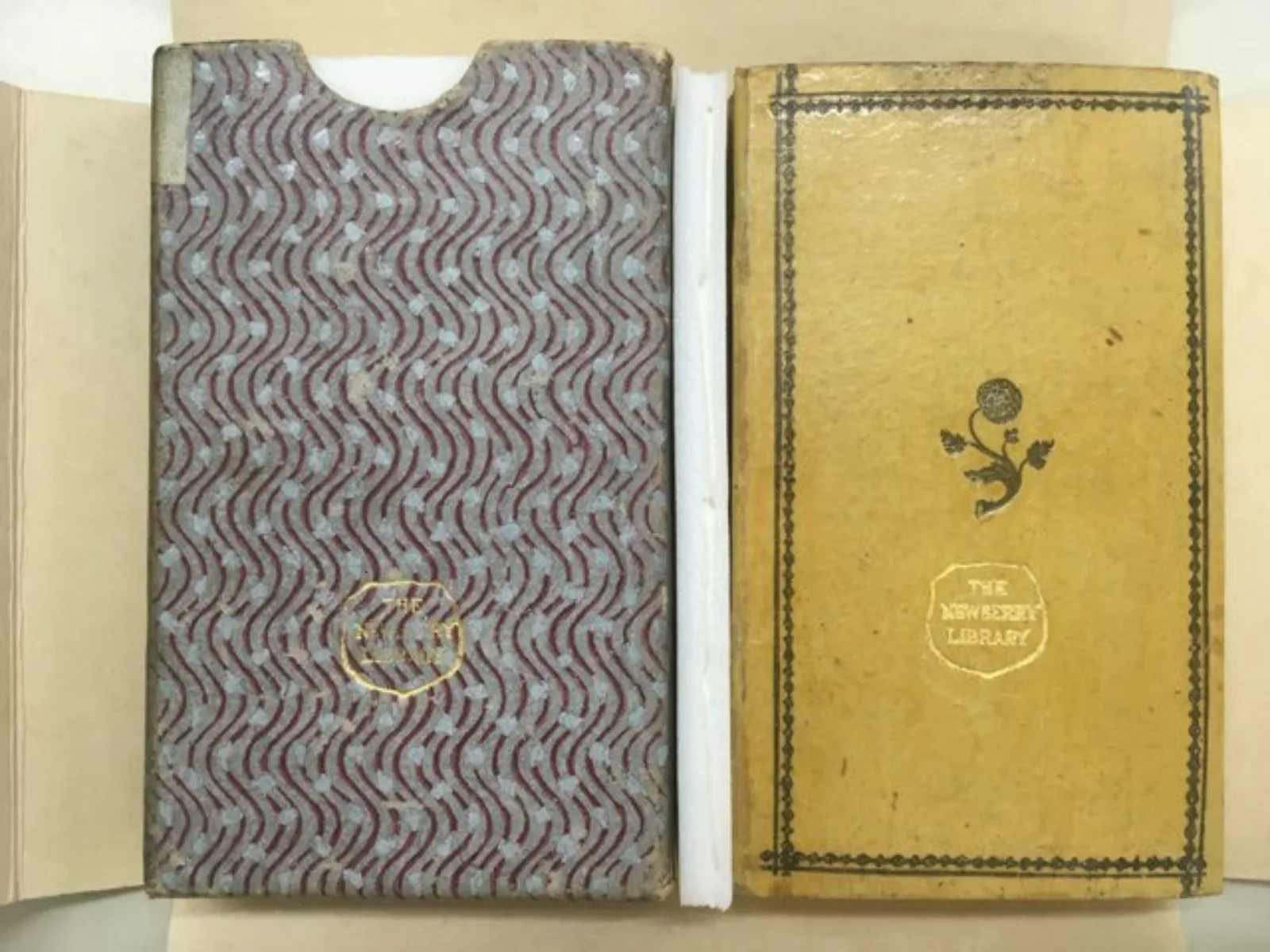
First published at the court of the Duke of Saxe-Gotha-Altenberg in 1763, the Almanach continued to be pubished annually until World War II. Although the cognate “almanach” may remind you of weather forecasts and planting charts, the Almanach de Gotha is most famous for recording the noble lineages of Europe, not for helping farmers decide when to harvest their tomato crop. It’s a great genealogical reference tool if your family happens to be, for example, Saxon royalty. Although the simple listing of the names and birthdays of “des Princes & Princesses de l’Europe” might not seem very exciting, the Almanach de Gotha’s contents could get pretty contentious. Nobility paid close attention to who was named in the first section of the Almanach, which was devoted to royal ruling families (nobility with only titles and no power were relegated to the back of the volume), and even in what order houses were listed.
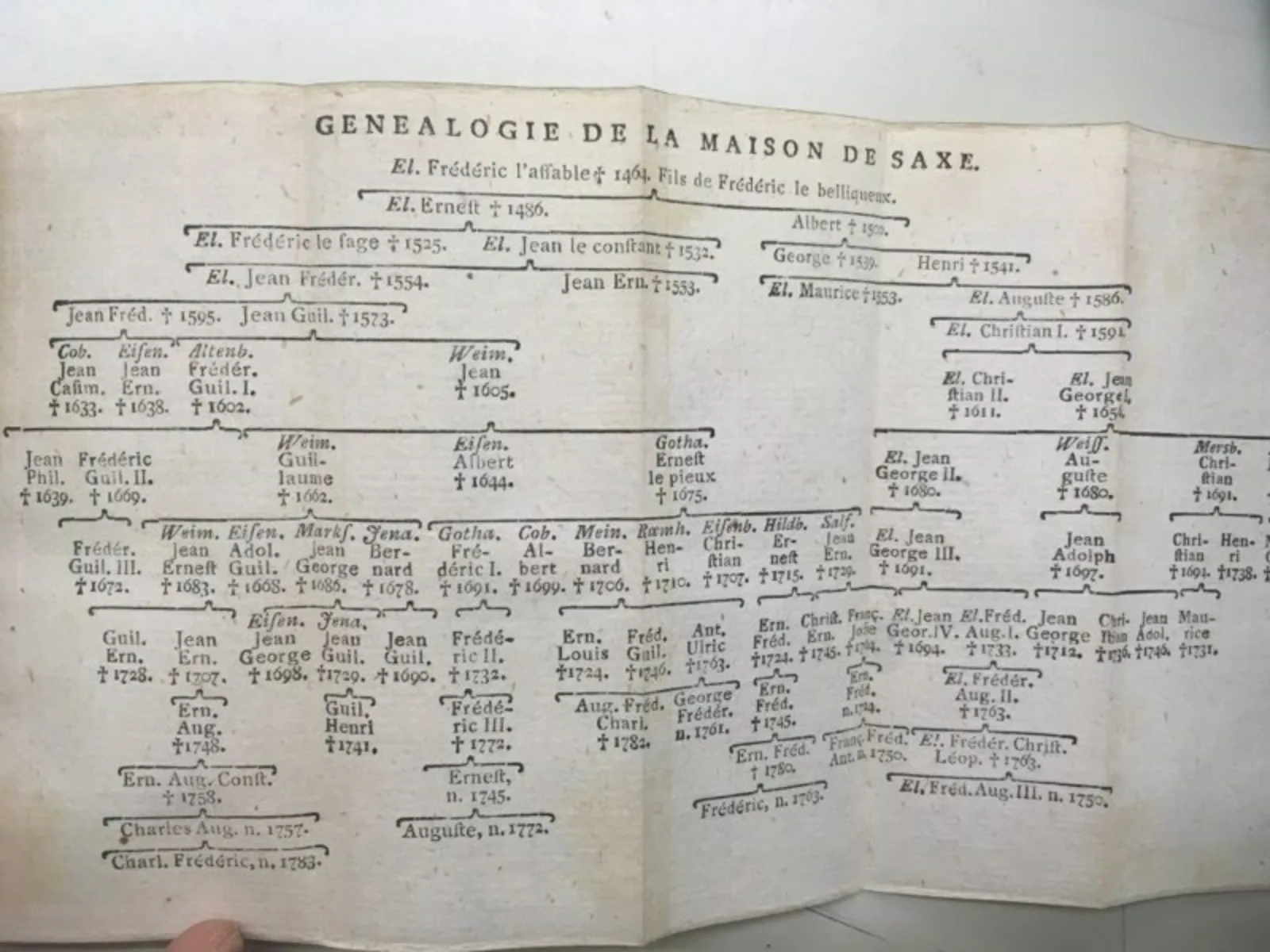
The Newberry has hundreds of volumes in its miniature book collection, probably my favorite section of the stacks. The smallest miniature I found when I went hunting for other tiny books is an edition of Traumbescherung by Eduard Duller, which measures less than an inch square (9/16 x ¾”) and is complete with thumbnail-sized lithographs. While the Almanach editions are not this small, they were meant to be pocket-sized. In housing them, one of my goals was to make the containers big enough so that the miniature books would not get lost on the shelves with regular-sized books. The delightful hand-painted wrappers also posed a challenge, as some of them were very snug around their books, increasing the risk that a reader might damage the book when trying to remove it from a tight covering. I also wanted the new housing to be of a standard size to keep the set of books looking as matched as possible.
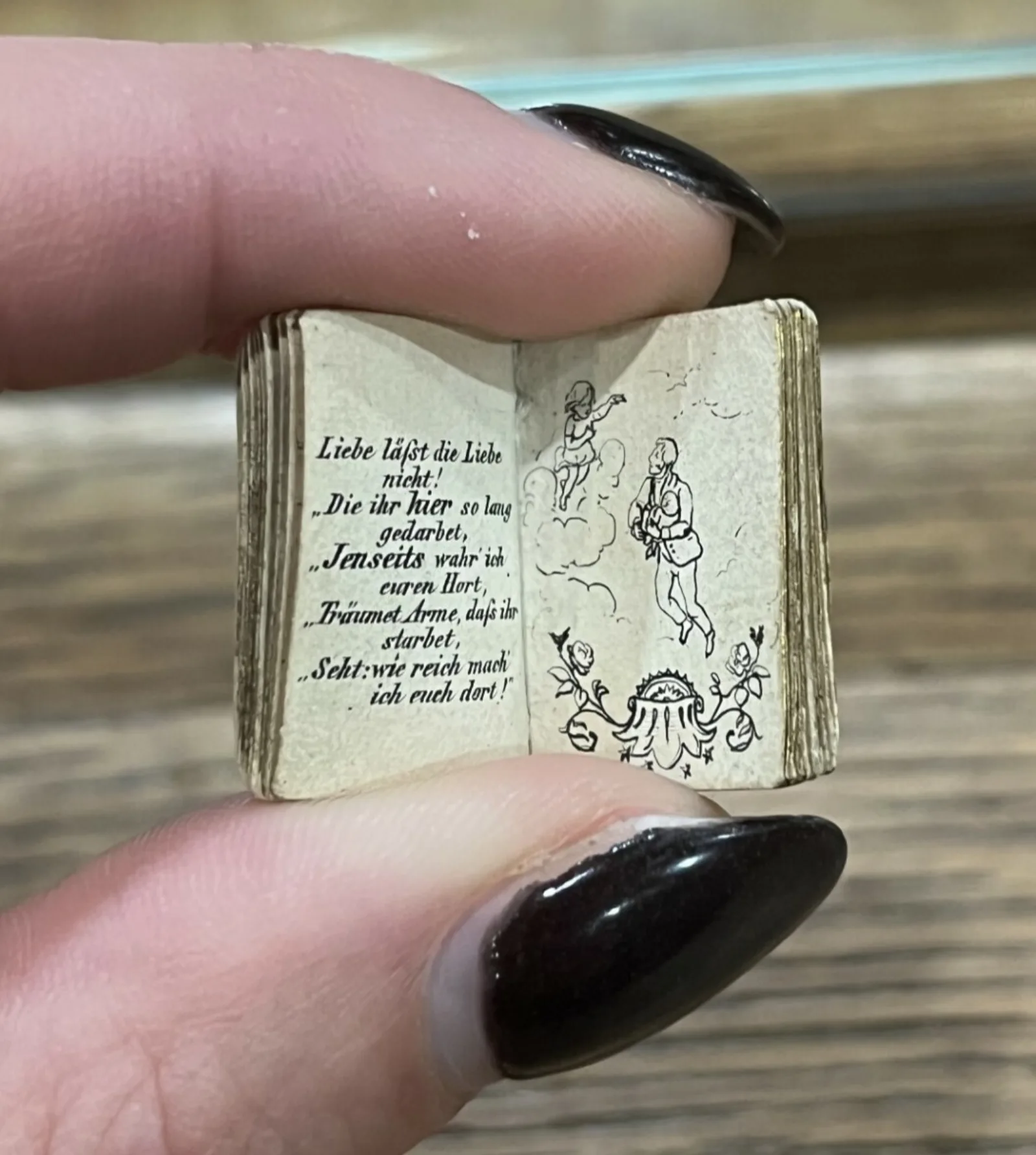
After testing a few different designs, I settled on housing the books and wrappers separated but next to each other in a four-flap box made of 20-point board, with a thin strip of Volara foam down the middle keeping each item in place. This “wrapper” housing is common for lightweight items, especially those in multiple pieces, because it is quickly made and does not take up much more shelf room than the original item. In this case, it not only shows off the vibrant designs on both book and carton, but also solves the problem of trying to take the volumes out of their tightly fitted wrappers and means that the box can be large enough that it won’t get accidentally misplaced. I cut inserts slightly smaller than each book from Volara foam and laid these in the now-empty wrappers to keep them from being crushed during handling. For the few books that no longer had wrappers, I made the same-sized housing in the interest of uniformity but padded the inside with more foam, making sure to include a thumb-sized notch for lifting the book out of its box.
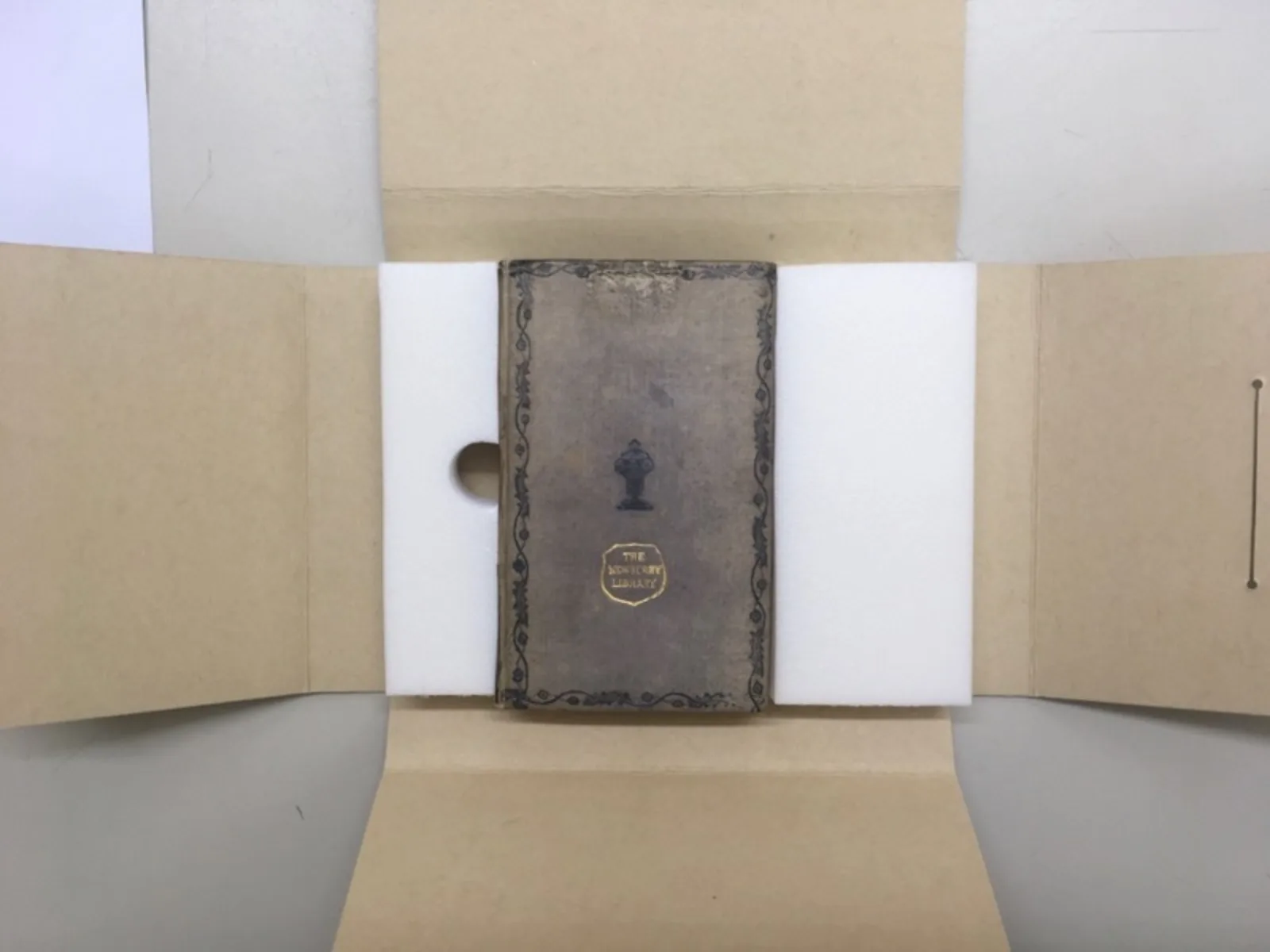
The end result of this work was a matching set of boxes keeping the Almanach volumes safe and sound in the library stacks. Visitors to the library can see these and other miniature books five days a week with the help of Special Collections staff!
Gabriel Hamer works as a Conservation Technician in the Newberry's Conservation Lab.
